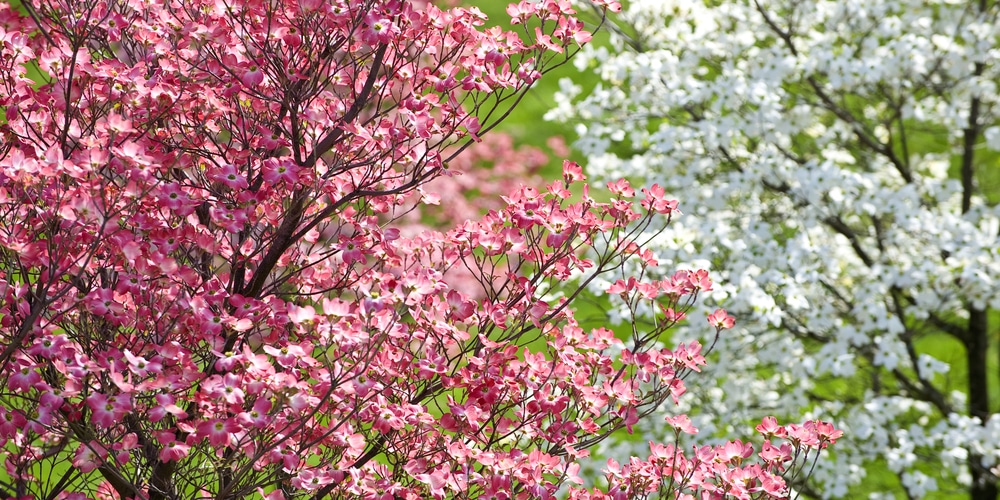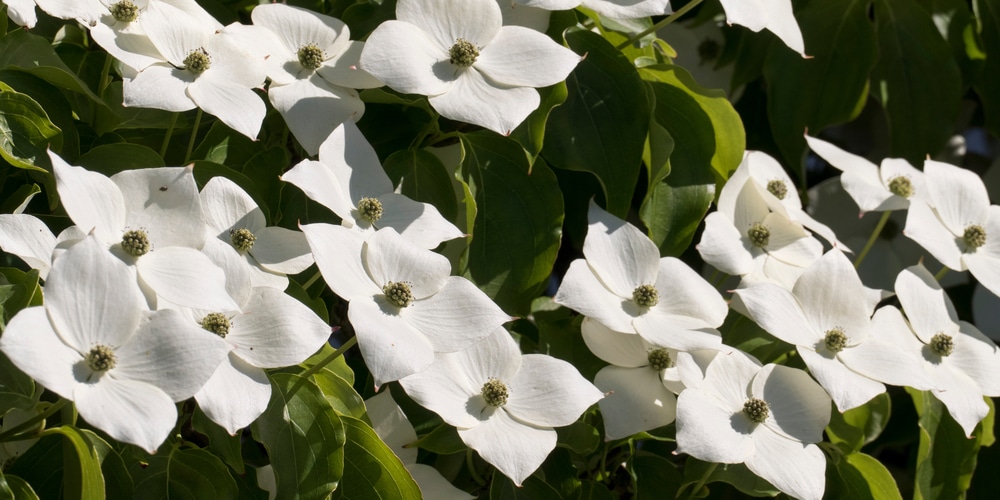If you’re looking for an ornamental tree to add beauty to your landscape, the dogwood tree is a great option. Dogwoods can be grown in Texas, but there are some things you should know before planting one. This article will discuss the best way to grow a dogwood tree in Texas and when you can expect it to bloom.
The Dogwood Tree

The Dogwood tree is a beautiful addition to any landscape. Though it is most commonly known for its white blossoms, the Dogwood tree comes in various colors, including pink, red, and yellow.
The flowers of the Dogwood tree are lovely to look at, but they are also an important food source for bees and other pollinators. In the fall, the Dogwood tree leaves turn a stunning shade of crimson, providing a vivid pop of color as the leaves begin to drop.
The wood of the Dogwood tree is also quite valuable; it is strong and dense, making it ideal for various uses, from furniture to flooring.
In addition to being aesthetically pleasing, Dogwood Trees are also very versatile. They can be used as specimen trees, hedges, or Privacy screens.
Dogwood Trees are relatively easy to care for, and they are tolerant of most soil types and climates. As a result, they are an excellent choice for homeowners who want to add some curb appeal to their property.
Where Does It Grow
Dogwoods are a popular tree known for their beautiful flowers and striking fall colors. They do best in well-drained, slightly acidic sandy loam soil – which is why they thrive in East Texas.
Dogwoods also prefer partial shade, although they can tolerate full sun if the soil conditions and moisture are ideal. The abundance of blooms is typically related to the amount of sun exposure the tree receives.
Dogwoods are most commonly found as an understory tree, where they can reach up to 40 feet. When grown in full sun, dogwoods are shorter but no less beautiful.
Aside from East Texas, can they also grow in South and North Texas?
Yes and no. Dogwoods are most well-suited for the East Texan climate. However, some have been able to grow them in the north and southern parts of Texas. But growing them in these areas is very difficult. So, if you are planning to grow them in these areas, be prepared for the worst.
When to Expect Bloom
The dogwood tree is a welcome sight in the East Texas forest during the bleak winter months. Its beautiful white blooms are a sign that spring is on its way. But the dogwood is more than just a pretty face; it also provides an important food source for many Pineywoods animals.
In the fall, red fruits develop on the tree. These fruits are eaten by mammals ranging from squirrels to deer and at least 28 bird species. The seeds contained in the fruit are then dispersed through animal droppings and germinate the following spring.
Flowering dogwoods often live for up to 80 years, making them an essential part of the forest ecosystem.
The timing of the bloom depends on the variety of Dogwood tree and the climate in which it is grown. Dogwoods grown in warmer climates will bloom earlier than those grown in cooler climates.
After the flowers bloom, the Dogwood tree leaves will begin to change color, turning a beautiful shade of crimson in the fall. This is one of the many reasons why Dogwoods are such a popular ornamental tree – they provide interest and beauty all year round!
When To Plant
Dogwood trees are a popular choice for gardeners in Texas. They are relatively easy to care for and can provide year-round interest, with beautiful flowers in spring, vibrant foliage in summer, and stunning fall color. However, timing is critical when planting dogwoods.
The best time to plant them is in late fall or early winter, after the leaves have fallen but before the freezing ground. This gives the trees a chance to establish their roots before the hot Texas summer arrives.
Gardeners who wait until spring to plant their dogwoods may find that the trees suffer from heat stress and have difficulty adapting to their new environment. By planting in late fall or early winter, you can help ensure that your dogwoods thrive for years to come.
Growth And Maintenance
Dogwoods are relatively easy to care for, but there are a few things you need to do to ensure that your tree thrives. First, make sure to plant your dogwood in an area that receives partial shade.
Too much sun can scorch the leaves, and too little sun will prevent the flowers from blooming. Second, water your tree regularly, especially during the hot summer months. Dogwoods are drought-tolerant, but they will produce more flowers with adequate moisture.
Lastly, fertilize your tree twice a year – once in spring and again in fall – with a balanced fertilizer. By following these simple tips, you can enjoy the beauty of dogwoods for many years to come.
Did You Know
Christians believe that the cross on which Jesus was crucified was made from a dogwood tree. At that time, dogwood trees were large and straight, making them ideal for constructing crosses. However, after Jesus was crucified on a dogwood cross, God decreed that the tree would never again grow large enough to be used for such a purpose.
Today, dogwood trees are small and understory trees that bloom around Easter time most years. While the Christian lore surrounding the dogwood tree is fascinating, it is also a reminder of the powerful symbolism of the cross and the sacrifice that Jesus made for humanity.
Final Thoughts On Dogwood Trees In Texas
If you’re looking for a beautiful flowering tree to add to your Texas landscape, dogwood is a great option. They are relatively easy to grow and care for and provide you with stunning blooms each spring.
Just be sure to plant them in an area that receives partial shade and has well-drained soil. With a little bit of TLC, your dogwood tree will thrive and provide you with years of enjoyment.
Related article: Guide to Dogwood Tree Fertilizer

